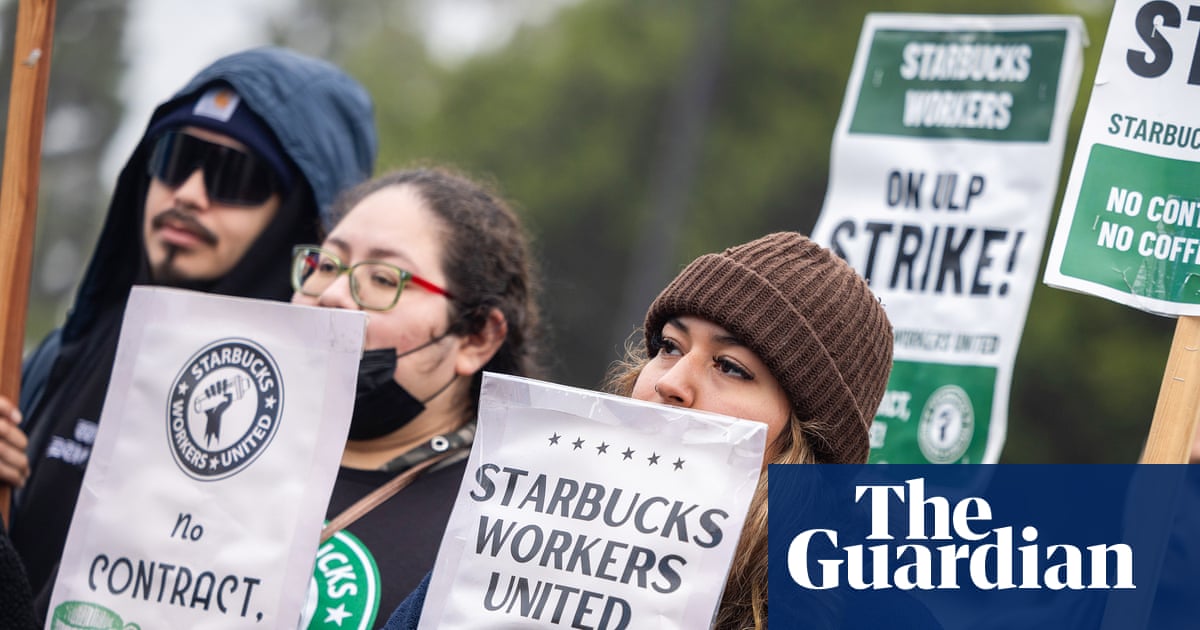Some of the US’s lowest-paying large firms increased their CEOs’ compensation by an average of almost 35% over five years, according to new research. Their workers’ salaries did not keep up.
As executive remuneration ballooned, the average CEO-to-worker pay gap across the 100 companies in the S&P 500 with lowest median worker pay – dubbed the Low-Wage 100 by the Institute for Policy Studies – widened by 12.9% between 2019 and 2024, from 560 to 1 to 632 to 1.
“Median pay increased only modestly, whereas CEO pay really skyrocketed,” said Sarah Anderson, director of the Global Economy Project at the Institute for Policy Studies, and author of the report.
Between 2019 to 2024, CEO pay at these companies increased by 34.7%, unadjusted for inflation, compared with a 16.3% increase in these firms’ average median worker pay during the same period – short of inflation, which came to 22.6% over the same period.
By last year, average CEO compensation in the Low-Wage 100 stood at $17.2m. Average median worker pay was $35,570.
Of the 100 firms, median worker pay fell at 22 between 2019 and 2024. Ulta Beauty reported a 46% drop in median worker pay to $11,078 as the company significantly expanded its part-time workforce.
Starbucks’ CEO pay was the largest gap in 2024, with its CEO, Brian Niccol, receiving total compensation worth $95.8m, 6,666 times as much as the company’s $14,674 median pay.
“It’s a stunning message for Starbucks management to send to their workers who’ve organized unions at 570 stores in recent years, and they’re still waiting for the company to negotiate a contract. It says a lot about who they really value at that company and who they don’t,” said Anderson.
Starbucks did not respond to multiple requests for comment on the report.
The IPS report cites a June roundtable hosted by the Securities and Exchange Commission, the US markets regulator, on executive compensation disclosure requirements, where Drew Hambly, investment director at CalPers, the largest public pension fund in the US, described the negative impacts overcompensation of executives has on low-wage workforces.
after newsletter promotion
“I do want our boards to think more about the bottom 50% of people who work for them,” Hambly said. “Because when I go into a business, I’m probably interacting with a lower-wage worker. And if you’re going to drive value over time, that’s the face of your company.”
In recent years US families have struggled with high costs for groceries and housing, and layoffs have been on the rise. “In the midst of all of this, CEOs are focused on making themselves even richer, instead of thinking about the welfare of their employees or even the long-term growth of their company,” said Anderson. “I think if they continue on this path, it’s going to be a trend that is bad, not just for workers, but for these companies and our economy as a whole.”
Between 2019 to 2024, Low-Wage 100 firms spent $644bn on stock buybacks. More than half spent more on buybacks than on capital improvements at their firms.
Lowe’s spent $46.6bn on stock buybacks: $28,456 per each of the retailer’s 273,000 employees, according to the report. Home Depot ranked second in stock buybacks during this period, spending $37.9bn.
The report also noted 32 billionaires owe their wealth to Low-Wage 100 corporations, including eight billionaires from Walmart, four from Estee Lauder and three from DoorDash.
As policy solutions, the report highlighted support for a tax hike on corporations that pay their CEO at least 50 times more what they pay employees. It also urged policymakers to increase taxes on stock buybacks.
Ulta Beauty, Lowe’s and Home Depot did not respond to requests for comment.
Quick Guide
Contact us about this story
Show
The best public interest journalism relies on first-hand accounts from people in the know.
If you have something to share on this subject you can contact us confidentially using the following methods.
Secure Messaging in the Guardian app
The Guardian app has a tool to send tips about stories. Messages are end to end encrypted and concealed within the routine activity that every Guardian mobile app performs. This prevents an observer from knowing that you are communicating with us at all, let alone what is being said.
If you don’t already have the Guardian app, download it (iOS/Android) and go to the menu. Select ‘Secure Messaging’.
SecureDrop, instant messengers, email, telephone and post
If you can safely use the tor network without being observed or monitored you can send messages and documents to the Guardian via our SecureDrop platform.
Finally, our guide at theguardian.com/tips lists several ways to contact us securely, and discusses the pros and cons of each.
